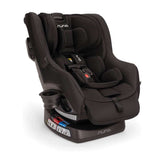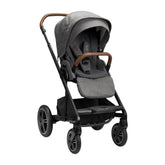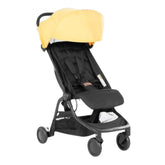7 Simple Ways to Relieve Clogged Milk Ducts

Updated 7 Jan 2025
Noticing a small, sore bump inside your breast will typically set off alarm bells for most people. However, if you’re nursing, odds are pretty good you’ve come across a plugged or clogged milk duct. While they can be a bit painful, a clogged milk duct is normally something you can treat at home. Let’s take a look at the best way to relieve a clogged milk duct and how to know whether you need to seek medical care.
What Causes Clogged Milk Ducts
In nursing parents, milk flows through the breast in a series of tubes called ducts. If one of these tubes has a blockage or difficulty with milk flow, a plug can form. This can create a little lump inside the breast that may appear swollen, inflamed, or painful to the touch. Clogged milk ducts are relatively common when breastfeeding and typically result from the breast not being fully emptied. This can occur for a variety of reasons:
- Skipping or missing a nursing or pumping session. Whether it slipped your mind or your little one slept longer than usual, it happens. Clogged ducts can also occur due to sudden changes in the routine, like rapid weaning or returning to work.
- Wearing shirts or bras that are too snug. This can limit your milk flow. Too much pressure on the breasts can also come in the form of underwire bras, a seat belt, baby carrier straps, or carrying a purse or diaper bag across your chest.
- Your infant isn’t latching properly or sucking efficiently. Both situations can result in your baby consuming less milk and causing a backup inside the duct.
- Your infant is in the NICU. Being away from your little one means you likely won’t be able to breastfeed as frequently.
Signs and Symptoms of a Clogged Milk Duct
The most obvious initial symptom for most people is a firm little lump in the breast near the surface of the skin. It may ache or hurt when touched. The area surrounding the lump may appear inflamed or feel warm. You may also notice that nursing helps relieve the pain a bit. You can occasionally see a plugged duct from the outside of your breast by noticing a tiny white milk plug (bleb) seen on the opening of the nipple. You may also observe that your breast milk appears thicker or grainy.

Ways to Relieve a Clogged Milk Duct
Typically, clogged milk ducts can be managed with simple home treatment as long as the issue is addressed quickly. Ignoring the situation can lead to infection. Early action is essential to prevent further progression, reduce pain, and eliminate frustration. Here are a few ways to relieve clogged milk ducts.
1. Nurse…a lot.
Breastfeeding is the best way to relieve a plugged milk duct and remove the clog. In fact, avoiding or limiting nursing on the affected breast can actually make the problem worse, causing more milk to back up and worsen the clog. Breastfeed on the affected breast first and ensure your baby completely drains the breast (i.e., don’t remove them too soon). It might hurt a bit at first but will probably feel better after your little one nurses.
2. Pump if necessary.
If your little one isn’t fully draining your breasts, finish up by pumping. You’ll know you’re done when you see the milk coming out in slow drips as opposed to a continuous stream.
3. Try different positions.
Play around with different nursing positions that may allow you to drain your breast more efficiently. For instance, latch your little one so that their nose and chin are pointing toward the plug and their suction is focused squarely on the affected duct. You can also try using a crossover or football hold to stimulate all milk ducts equally.
4. Hang loose.
Wear a well-fitting nursing bra, and stay away from underwires or tight straps from clothing, diaper bags, purses, or infant carriers.
5. Use gentle heat.
A warm (not hot) compress applied to the breast before feeding may help better empty the breast. Try using a washcloth soaked in warm water or fill a disposable diaper with warm water, squeeze out the excess water, and place it on the breast.
6. Try massage.
Therapeutic breast massage (taught by a certified lactation consultant) can also help. Apply delicate pressure in a circular motion to the outside of the breast and move in toward the clog. Be gentle to avoid overstimulation or injuring the breast.
7. See your doctor.
A plugged milk duct that isn’t treated can lead to mastitis, a painful infection that requires medical treatment. If the lump lasts longer than a few days or gets larger, if your entire breast becomes swollen, red, and painful, or if you develop flu-like symptoms or worsening pain, contact your doctor right away. Mastitis is typically treated with antibiotics (which are also safe for the baby).
The Takeaway on Clogged Milk Ducts
Unfortunately, the occasional plugged or clogged milk duct may be part of the deal when it comes to nursing. The good news is that they’re simple to treat at home, and the most effective thing you can do to heal is to continue breastfeeding. As you try to improve the situation, continue to observe your symptoms to make sure they don’t progress. If you start feeling increased pain and fatigue or notice increased redness, swelling, or pain, contact your healthcare provider as soon as possible.
Disclaimer: The information on our site is NOT medical advice for any specific person or condition. It is only meant as general information. If you have any medical questions or concerns about your child or yourself, please contact your health provider.









